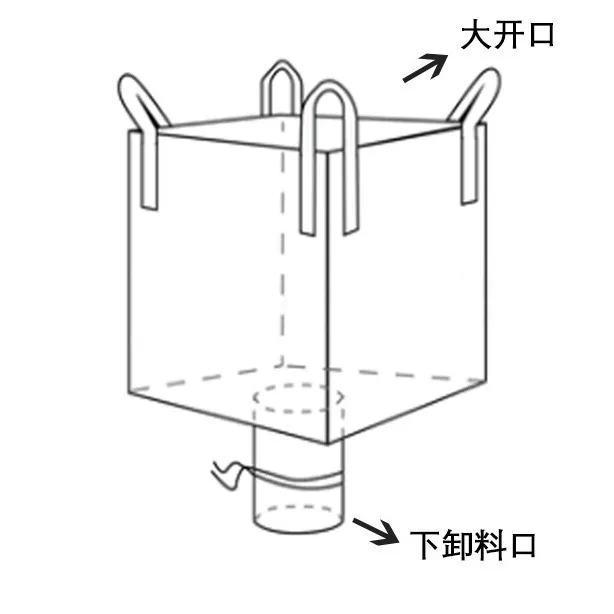
FIBC Bags, also known as Flexible Intermediate Bulk Containers, have become a staple in various industries for transporting and storing bulk materials. With designs that include double and four lifting loops, these bags offer versatility and enhanced functionality. However, one of the most significant issues in the realm of woven bags is the phenomenon of bag bursting, which poses serious challenges for manufacturers and users alike. In this blog, we will explore the features of FIBC Bags, the reasons behind bag bursting, and how rigorous quality control measures can mitigate these risks.
Features of FIBC Bags
FIBC Bags are designed for strength and efficiency, catering to a wide range of applications. Key features include:
Double and Four Lifting Loops
- Double Lifting Loops: These provide enhanced stability when lifting and transporting, allowing for better load distribution and ease of handling.
- Four Lifting Loops: This design offers even greater support and balance, especially for heavier loads. It enables the bags to be lifted from any side, ensuring flexibility in transportation.
- Customizable Options: Depending on client needs, FIBC Bags can be customized in terms of size, capacity, and loop design, making them adaptable for various materials and industries.
The Issue of Bag Bursting
Bag bursting is one of the most severe quality issues faced by the FIBC industry. This phenomenon can lead to product loss, safety hazards, and financial implications. Understanding why bags burst is crucial for manufacturers to prevent this issue.
Factors Contributing to Bag Bursting
- Material Quality: The type and quality of raw materials used in production play a significant role in the overall strength of FIBC Bags. Inferior quality polypropylene (PP) or inadequate material thickness can compromise the bag’s integrity.
- Load Capacity: Exceeding the designated weight limit of the bag can lead to undue stress on the seams and fabric, resulting in failure. It’s essential to adhere strictly to the weight recommendations for each bag.
- Environmental Conditions: Factors such as UV exposure, humidity, and temperature can weaken the material over time. If bags are stored in adverse conditions, the risk of bursting increases significantly.
- Improper Handling: Rough handling during transportation or improper loading techniques can cause localized stress points that may lead to bursting.
Quality Control Measures
To combat the issue of bag bursting, it is vital to implement rigorous quality control measures at every stage of production. Here’s how we ensure the durability and safety of our FIBC Bags:
Raw Material Inspection
Before production begins, we conduct thorough inspections of all incoming materials. This includes:
- Material Thickness: Ensuring that the thickness of the PP fabric meets our stringent specifications to provide the necessary strength.
- Tensile Strength Testing: Raw materials are tested for tensile strength to ensure they can withstand the stresses of handling and transport.
- UV Resistance: Materials are evaluated for their resistance to UV rays, particularly for bags intended for outdoor use.
Production Quality Control
During the manufacturing process, several checkpoints are established to maintain quality:
- Random Sampling: For every batch of FIBC Bags produced, a random sample is taken to conduct a series of tests.
- Visual Inspection: Each bag is visually inspected for defects, ensuring that there are no weak points or irregularities in the fabric or seams.
- Seam Strength Testing: The strength of seams is tested to ensure they can handle the required loads without tearing.
Finished Product Testing
After production, FIBC Bags undergo extensive testing to verify their quality:
| Test Parameter | Description |
|---|---|
| Product Thickness | Measured to ensure compliance with specifications |
| Tensile Strength | Tested to verify the load-bearing capacity |
| UV Resistance | Assessed to ensure durability against sunlight exposure |
| Impact Resistance | Evaluated to withstand drops or impacts |
| Visual Quality | Checked for overall appearance and construction |
Continuous Improvement
Feedback from customers regarding product performance is critical. We analyze this feedback to continuously improve our manufacturing processes and address any potential weaknesses in our FIBC Bags.
Conclusion
FIBC Bags are essential for various industries, but their effectiveness can be compromised by the issue of bag bursting. By understanding the contributing factors and implementing strict quality control measures, manufacturers can significantly reduce the risk of failure.
Our commitment to using high-quality materials, rigorous testing protocols, and customer feedback allows us to produce reliable FIBC Bags designed for durability and safety. Whether it’s the design features like double and four lifting loops or the comprehensive quality assurance processes, we prioritize quality at every step to ensure our bags perform optimally in the field.
As industries continue to evolve, FIBC Bags will remain a reliable choice for bulk storage and transportation, provided that manufacturers uphold high standards of quality and safety.